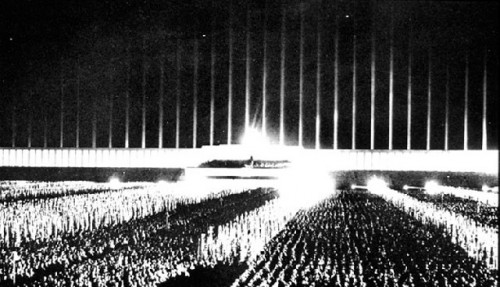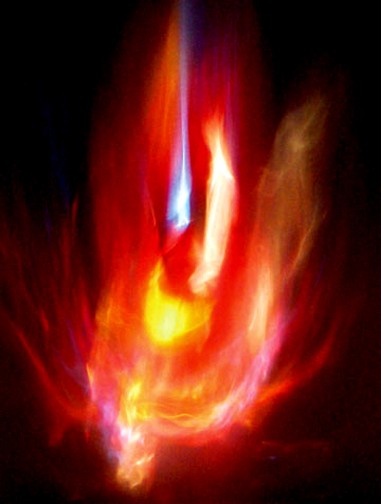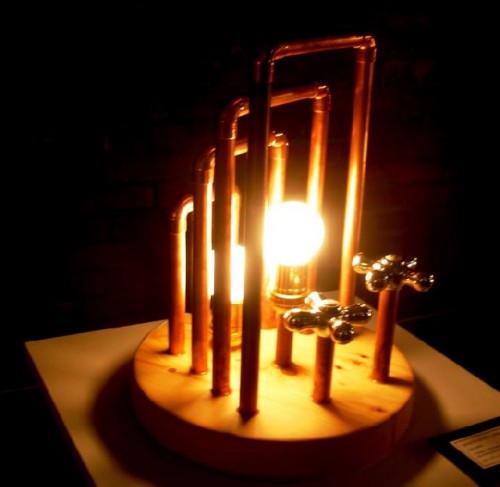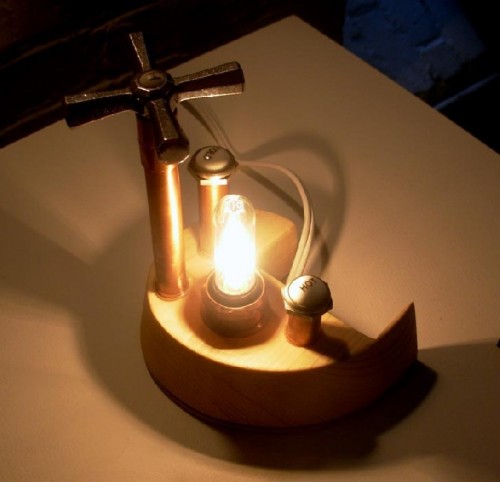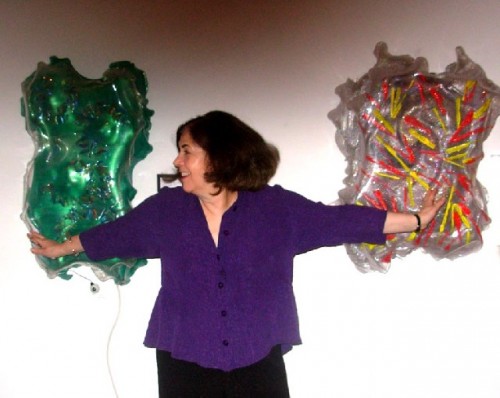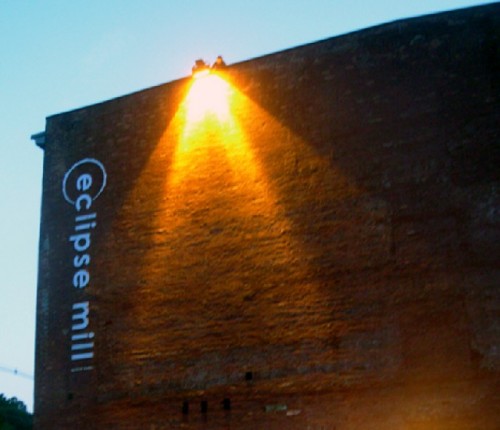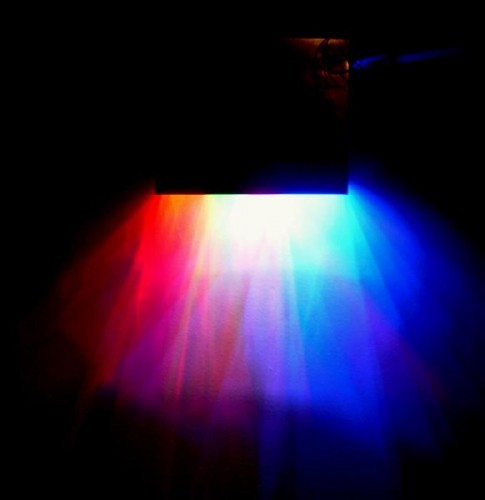Illuminati at Eclipse Mill Gallery
An Energized Exhibition in North Adams
By: Charles Giuliano - Aug 03, 2009
Illuminati: Working With Light
Curated by Julie Seitel
Artists: Richard Harrington, Brian Jewett, Marjorie Minkin, John Powell, Julie Seitel
Eclipse Mill Gallery
243 Union Street
North Adams, MA 01247
July 31 through August 30, 2009
Hours: Friday, Saturday, and Sunday from 12 to 5 PM
"Light" is a surah in the Koran intended by Mohammed the Prophet as a signifier of Allah. In the Book of Genesis God said "Let there be light." The spirituality of light pervades art through the centuries. It was the inspiration for the stained glass windows of Chartre Cathedral. The play of natural daylight in the landscape pervades the paintings of the Impressionists.
But switched on, plugged in light using an energy source appeared in the work of László Moholy-Nagy (1895-1946) in the Bauhaus. That German art academy was notable for the integration of art and design using industrial materials. In the collection of Harvard University's Busch Reisinger Museum is a mechanical machine that he designed. There were rotating elements played upon by a light source that created evolving shadows cast on a wall.
In a less benign manner, Hitler's architect and designer, Albert Speer (1905-1981), surrounded the Nuremberg Stadium with a circle of klieg lights pointed into the night sky to create cathedral of light. He also organized torch light parades including an enormous, rotating swastika photographed from above in the propaganda film "Triumph of the Will" by Leni Riefenstahl (1902-2003). Speer and Riefenstahl both understood the power of the metaphor of light. It is an example of great art used for an evil purpose.
During visits to the old Museum of Modern Art in the 1960s it was always fascinating to stand before the slowly evolving "Lumia" by the pioneering light artist Thomas Wilfred (1889-1968). There are only 35 surviving works by this seminal artist and they are rarely displayed. But his impact on the artists of the 1960s, many of whom showed at the Howard Wise Gallery in New York, was palpable.
The element of light was essential in the work of the German Zero artists including Otto Piene who took over from Gyorgy Kepes as the second director of the Center for Advanced Visual Studies at MIT. In 1977 Piene and the fellows of CAVS collaborated on "Centerbeam" a multi media piece for documenta 6 in Kassel, Germany. My wife, Astrid Hiemer, was an administrator under Piene at that time. "Centerbeam" was later shown on the Mall of Washington, D.C.
There is historical continuity in the fact that two of the artists in the current exhibition "Illuminati" at the Eclipse Mill Gallery in North Adams, through August 30, Richard Harrington and John Powell, are alumni of CAVS. The project, which also includes Marjorie Minkin and Brian Jewett, has been curated by Julie Seitel who is a theatrical lighting designer for the 62 Center of Williams College.
The artists include residents of the Eclipse Mill (Seitel, Jewett and Minkin) a neighbor from Williamstown, Harrington, and a guest artist from Boston, Powell. Tt is remarkable that drawing on geographically limited sources, Seitel has assembled a fresh, lively and insightful exhibition. It is one of the most spectacular, must see shows of the Berkshire season.
One of the greatest challenges for a curator is to take an original idea and create a context for the work. Here all of the elements mesh superbly. Upon entering the gallery, or even approaching the Mill at night along Route 2, it is immediately and powerfully obvious what the exhibition is about. The building itself has been morphed into a sculpture by the sparing use of industrial lights which Powell positioned over the cornice and directed down in splayed beams from either end of the vast building.
This is the first time that Seitel has curated an exhibition. It is just over a year since she started to create work in the studio. The light pieces in the exhibition which combine copper tubing, antique plumbing fixtures and a variety of light bulbs evolved out of the "practicals" or lighting elements she designed for the student production "Machinal" at Williams College. She began to experiment with these materials as light fixtures which have evolved remarkably in the past year. The exhibition brings together most of what she has created with the exception of a couple of pieces which have been acquired by collectors.
There is a techie sensibility, in every sense, in the creations of Powell and Harrington. The avant-garde premise of CAVS has been to combine the forces of art, science and technology. To take advantage of the knowledge and materials resulting from advances in science and industry and then develop their potential for art.
In the tradition of Moholy-Nagy, and the late artist/ curator, Virginia Gunther, (she curated the first contemporary exhibition for the Museum of Fine Arts, Boston "Elements" in 1971) Harrington has installed a Shadow Piece. Using wire screen, he has created a pyramid like relief on the wall. On that is cast a light source which extends and enlarges the profile of the structure.
The work of Brian Jewett has evolved from the notion of basket making. His specific interest has been in weaving them from recycled industrial elements. This evolved into making the baskets into vessels as hanging lighting fixtures. He also creates table and standing lamps such as "Wave Lamp" in which patterns are projected onto the wall. In addition to their practical uses these are also Green works that preserve and enhance the environment. It is important to the artist that the work has a positive social and political impact.
The wall pieces in molded and formed transparent materials by Marjorie Minkin evolved from aspects of abstract painting and sculpture. One of these works was included in an Eclipse exhibition last year. It entailed a sensor and motion detector. As one came in range it triggered a sound which became more intense the closer one approached. Often children were delighted to play with activating the piece. In the past year she has added an element of light to the work as well as the sound.
Regarding the current work Minkin and her collaborator Mike Gordon, who has created the sound, state that "The new installation with the lights has a third collaborator, Jamie Robertson. Jamie is a musician, technologist, engineer and physicist who worked for over 10 years as director of research and development for Disney's Imagineering in CA where he designed interactive exhibits. Jamie has worked with many individual artists and has designed and executed projects for museums. We consider ourselves very lucky to have him as a collaborator. He created new wireless technology for the sound and lights for these pieces."
In addition to the exterior building lighting Powell is also on view in the gallery with "Shadow Draft" which entails RGB light emitting diodes, hardware and electrical parts. The wall mounted relief piece emits a soft play of blended colored light.



